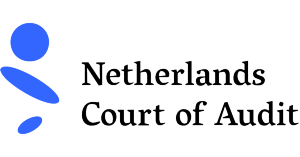Discover how location-based analysis revolutionizes the auditing of public funds in this comprehensive introduction to geospatial auditing, created in collaboration with the Algemene Rekenkamer.
Public spending is inherently geographical—hospitals, schools, roads, and infrastructure projects all have specific locations where they should serve citizens. Governments increasingly use geospatial information to develop and monitor policy measures, yet auditors often lack the tools to verify whether public funds reach the right locations and achieve intended results.
This course explores how geospatial information enhances every stage of the audit process: identifying risks, selecting audit topics, collecting and analyzing data, and communicating findings. Through real-world examples, you'll see how spatial data has made critical differences in audit outcomes—from tracking disaster relief spending to monitoring infrastructure development and assessing forest protection measures.
Target Audience
- Auditors working for Supreme Audit Institutions or for public entities
- Policy evaluators working for public entities, advisory and consultancy firms, research and scientific knowledge institutions (universities)
- Students and experts in geospatial sciences with an interest in applying this knowledge in the public domain to improve the results of public policies.
Offered by:







